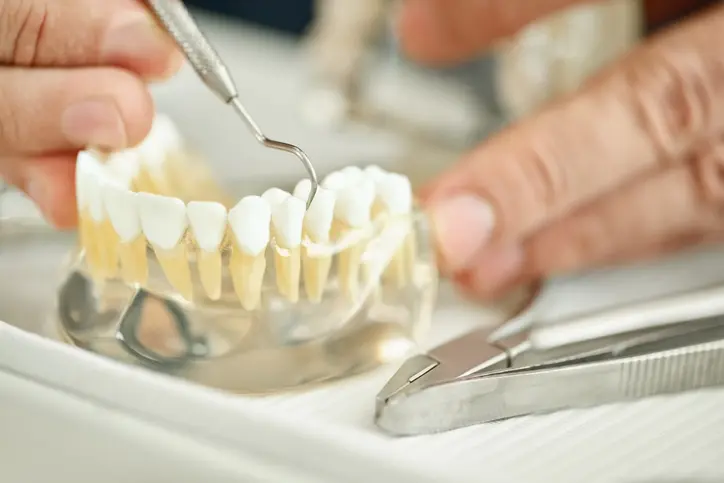If you have a worn or damaged tooth but are unsure if you need an inlay, onlay, or complete dental crown, we can help. Dental crowns, whether they fully cover a tooth or cover a smaller part of the tooth, help restore the smile’s appearance and function. There are several differences between partial vs. full dental crowns; we will review these restorations in our Arlington Heights, IL office to help patients determine which treatment may be right for their oral health needs.

PARTIAL AND FULL DENTAL CROWNS IN ARLINGTON HEIGHTS, IL
Inlays and onlays are also known as partial crowns because they do not fully cover teeth. An inlay can cover the chewing surface of a tooth between the tooth cusps, or sides of the tooth. Onlays cover this chewing surface and the very top of the tooth, covering the sides. However, like full dental crowns, inlays and onlays are separate pieces that we bond to prepared teeth.
Complete dental crowns are tooth-colored caps that fully cover single teeth. Full dental crowns are customized to match the exact shape and shade of natural teeth and add structure to the smile. Crowns are also used in other restorations like implants and dental bridges.
DIFFERENCES BETWEEN PARTIAL AND COMPLETE DENTAL CROWNS
There are several differences between partial and complete dental crowns that you should consider before treatment:
- Materials: Full or complete dental crowns may be made from metal, porcelain fused to metal or porcelain. Inlays and onlays are typically made of tooth-colored composite materials. We typically recommend tooth-colored porcelain or composite materials for crowns. While some crowns are made of metal, they do not easily blend in with the smile. Modern materials that are color-matched to blend in with adjacent natural teeth offer a more seamless look.
- The Extent of Damage: Inlays and onlays only cover the chewing surface of a tooth. Patients with damage from a filling or wear within the confines of the tooth cusps can receive partial crowns. However, if patients have tooth damage on all areas of the tooth, we will recommend a full crown. Complete dental crowns can also hold fractured teeth together.
- Uses: Full dental crowns have more uses for patients who require a restoration. Complete dental crowns can cap off dental implants or hold traditional dental bridges together. Full crowns can also support a tooth after a root canal or a tooth that has a large dental filling. We will typically recommend inlays or onlays for patients who have minimal tooth damage and do not need protection for their entire tooth.
Do you need a dental crown but aren’t sure which type is for you? Call AH Smiles for a consultation today at (847) 230-9703. You may also schedule a dental appointment with Dr. Brent Engelberg online. He will help you find the best treatment for your needs.
